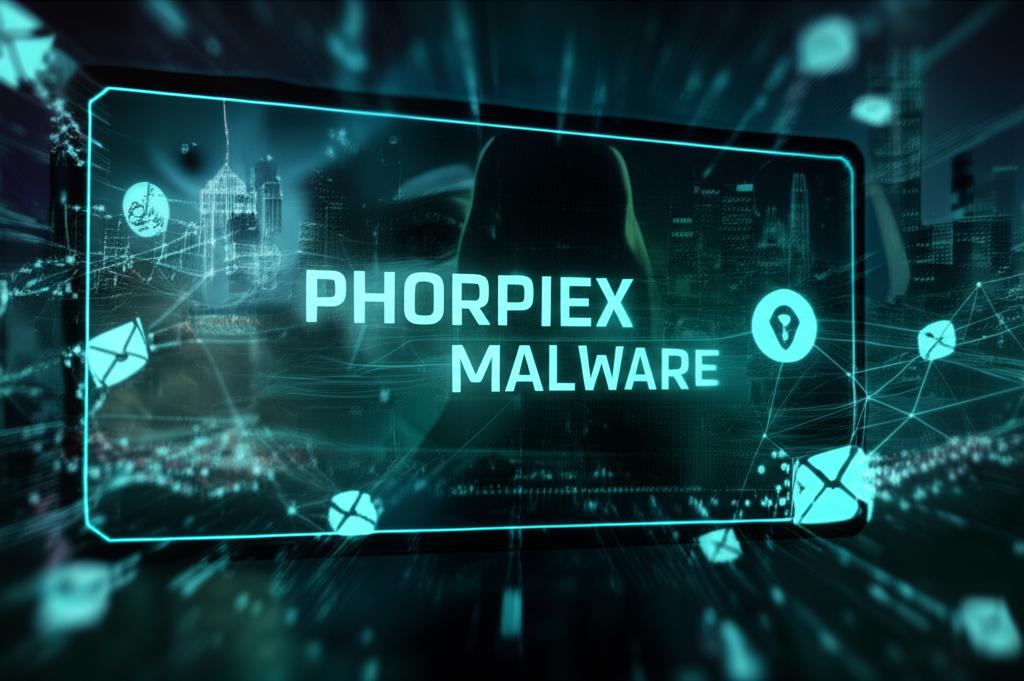Unmasking the Vicious Phorpiex Malware Threat: A Critical Analysis
Understanding the Phorpiex Malware Epidemic: A Deep Dive
The digital landscape is constantly under siege from evolving cyber threats, and among the most persistent and notorious is Phorpiex Malware. Operating as a sophisticated botnet, Phorpiex has wreaked havoc across the internet for over a decade, distributing various forms of malicious content, from spam and phishing emails to ransomware and cryptocurrency-stealing Trojans. Understanding this resilient threat is crucial for robust cybersecurity.
What is Phorpiex Malware?
Phorpiex, also known as Trik, is a long-standing and highly adaptable botnet that has been active since at least 2007. It primarily functions as a malware distribution network, leveraging infected computers (bots) to spread further infections and conduct malicious campaigns. The Phorpiex Malware is renowned for its resilience and ability to constantly update its tactics, making it a formidable adversary for cybersecurity professionals worldwide. Its core capability lies in its robust spam engine, which is used to push out vast quantities of malicious emails.
How Phorpiex Operates: Modus Operandi
The operational tactics of Phorpiex Malware are multifaceted and highly effective:
- Spam and Phishing Distribution: This is Phorpiex’s bread and butter. It sends out millions of spam emails daily, often containing links to malicious websites or attachments embedded with other malware. These emails frequently impersonate legitimate organizations or offer tempting but fake promotions.
- Cryptocurrency Stealing: A significant recent development in Phorpiex’s capabilities is its ability to swap cryptocurrency wallet addresses on infected machines. When a user copies a cryptocurrency address to their clipboard, Phorpiex intercepts and replaces it with the attacker’s address, diverting funds during transactions.
- Ransomware Distribution: Phorpiex has been a known distributor for various ransomware strains, including GandCrab and Avaddon, locking users’ files and demanding payment for their release.
- Credential Theft: It can also deploy modules designed to harvest sensitive user credentials, such as login information for banking services, social media, and other online accounts.
- Botnet Recruitment: Infected machines become part of the Phorpiex botnet, allowing attackers to scale their operations and launch larger, more impactful attacks.
The adaptability of Phorpiex Malware means that its specific attack vectors can change rapidly, requiring constant vigilance.
The Devastating Impact and Dangers
The presence of Phorpiex Malware on a system or within an organization can lead to severe consequences:
“Phorpiex is not just a nuisance; it’s a foundational threat that underpins a wide array of cybercriminal activities, from financial fraud to major data breaches.” – Cybersecurity Expert
Its dangers include:
- Financial Loss: Directly through cryptocurrency theft or indirectly through ransomware payments and recovery costs.
- Data Breaches: Theft of sensitive personal and corporate data.
- Reputational Damage: For organizations whose systems are compromised and used to spread malware.
- System Downtime: Due to infections and subsequent remediation efforts.
- Privacy Invasion: Personal information can be exposed and exploited.
Protection Strategies Against Phorpiex Malware
Defending against a sophisticated threat like Phorpiex Malware requires a multi-layered approach:
- Robust Antivirus/Anti-Malware Solutions: Keep them updated and perform regular scans. Choose solutions with real-time protection capabilities.
- Email Security: Implement advanced email filtering to detect and block spam, phishing attempts, and malicious attachments before they reach users’ inboxes.
- Network Firewalls: Configure firewalls to restrict unauthorized outbound connections, preventing infected machines from communicating with Phorpiex command-and-control servers.
- Software Updates and Patching: Regularly update operating systems, web browsers, and all software to patch known vulnerabilities that Phorpiex and other malware can exploit.
- User Education and Awareness: Train users to recognize phishing emails, suspicious links, and unusual attachments. Emphasize caution when handling cryptocurrency transactions.
- Backup Data: Regularly back up critical data to an offline or secure cloud location to mitigate the impact of ransomware.
- DNS Filtering: Block access to known malicious domains associated with Phorpiex command-and-control infrastructure.
By implementing these comprehensive strategies, individuals and organizations can significantly reduce their risk of falling victim to the persistent threat posed by Phorpiex Malware and other sophisticated cyber attacks.







